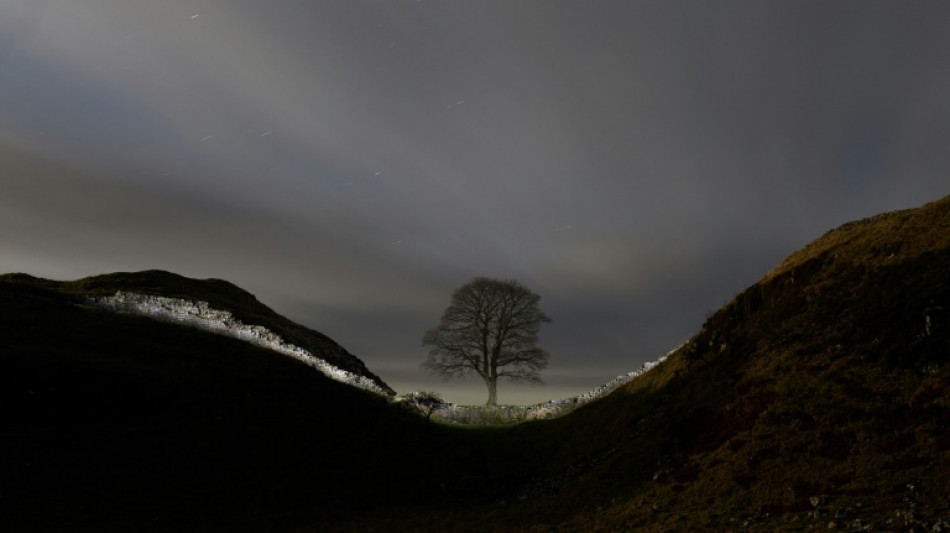
SCS
0.2300


A 16-year-old boy arrested after one of Britain's most photographed trees was found felled next to the Hadrian's Wall UNESCO World Heritage site in northeast England was released on bail on Friday.
The Sycamore Gap tree, which has stood for more than 200 years in the Northumberland National Park, was found fallen after overnight storms.
Its stump was seen with white paint marks and appeared cleanly cut, as if by a chainsaw, AFP reporters at the scene said.
Northumbria Police arrested the 16-year-old on suspicion of criminal damage on Thursday.
"He has since been released on police bail, pending further enquiries," the force said Friday.
Superintendent Kevin Waring said Thursday that "the events of today have caused significant shock, sadness and anger throughout the local community and beyond".
"Given our investigation remains at a very early stage, we are keeping an open mind," he added.
The crown of the tree lay partly on the ancient Roman fortification, which stretches 73 miles (118 kilometres) from coast to coast.
Despite widespread dismay and anger at the felling, National Trust general manager Andrew Poad told BBC television that tree could survive.
"It's a very healthy tree, we can see that now, because of the condition of the stump, it may well regrow a coppice from the stump, and if we could nurture that then that might be one of the best outcomes, and then we keep the tree."
In coppicing, shoots regrow from buds at the base of the stump to create multi-stemmed trees.
The landmark sycamore, located in a dramatic dip in the landscape, became internationally famous when it was used for a scene in the 1991 blockbuster film "Robin Hood: Prince of Thieves", starring Kevin Costner.
It won the Woodland Trust's Tree of the Year in 2016 and is a key attraction that has been photographed by millions of visitors over the years.
Hadrian's Wall was begun in 122 AD during the reign of emperor Hadrian, and marked the boundary between Roman Britannia and unconquered Caledonia to the north.
S.Palmer--TFWP